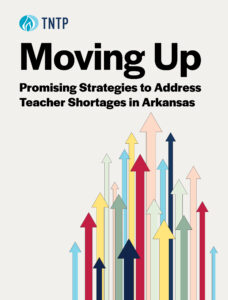Nearly a full school year has passed since we published The Irreplaceables and revealed just how badly schools across the country have been neglecting their best teachers. In our report, we called for a new focus on smart teacher retention: the idea that education leaders need to start asking not just whether they’re keeping enough teachers, but whether they’re keeping the right teachers—more Irreplaceables, and fewer consistently low performers.
Writing a report is one thing. Changing the habits of large systems is another. Now’s a good time to take stock of where our report has led to action and where it hasn’t.
First, some good news:
- Last month, the New York City Department of Education released its first-ever “smart retention reports” for principals. This interactive tool shows principals the retention patterns at their school in recent years by performance level and includes a toolkit to help them develop and boost retention of their top teachers (borrowing many of the strategies we suggest in The Irreplaceables and our guide for principals). This was exciting news to me, especially because New York was one of the districts included in our report.
- Memphis City Schools has taken a number of steps to recognize its best teachers this year—one of the most effective ways to keep them in the classroom longer, according to our research. As part of its Teacher Effectiveness Initiative, MCS launched an “I teach. I am an Irreplaceable” campaign. Billboards and buses across the city have featured portraits of top teachers, and earlier this month, the district staged a multimedia art exhibit featuring the images. This stuff is very cool. I’ve had multiple teachers tell me how much it means to them that their family and friends see them up in lights as they drive around the city. Why isn’t everyone doing this?
- In Tennessee, Education Commissioner Kevin Huffman has proposed a major overhaul of the state’s licensure system that would support smart retention across the state. Teaching licenses would be renewed based on classroom performance, and districts would have more leeway in how they pay teachers, creating opportunities to recognize strong performance by paying Irreplaceables more. (Dan wrote about this yesterday, here.)
Other cities and states have also taken steps in the right direction. But not all the news is good.
Consider Chicago, my hometown. Despite a nasty strike last fall that was fueled in part by teachers feeling disrespected, the new teachers’ contract doesn’t include higher pay for top-performing teachers, a common-sense step that could help schools keep their Irreplaceables. It does not make it easier for talented early-career teachers to ascend the salary ladder more quickly, either.
In fact, when I spoke to a group of Chicago teachers not long after the strike, I polled them on whether they thought the “wins” in the contract would lead to higher retention of top teachers in the city. Fewer than 10 percent said they would. I think this is an instance where the tug-of-war may have settled political scores without solving some of the underlying problems that impair the professional status of teaching.
Win some, lose some. But there are lessons here for policy advocates like us.
- Just because someone agrees with you does not mean they will take action. Who contests that our best teachers are too often taken for granted? But appreciating some practitioners as exemplary means distinguishing them from their peers. We have seen district and union leaders struggle with this concept. The tendency to treat teachers like widgets remains strong and pushes systems to stick with what they have rather than embracing something that could be divisive. Our research shows this will ensure that we continue to lose too many Irreplaceables.
- If you want change, be ready to lend a hand. Not every district is like Memphis or New York, cooking up ideas to act on research. School systems have a lot to do. We’ve had more success when we provide concrete guidance and support on how to translate research into action. So for instance, instead of reminding districts to adjust pay scales to reward the best teachers, we’re helping them design those scales. . . plus new career roles that offer variety and choice.
As proud as we are of our research, our goal is to participate in the creation of better schools. The research is just the jumping-off point. Ten years from now, I think we will have a new dynamic in American schools for our most skilled educators. But only if we buckle down and build it.








